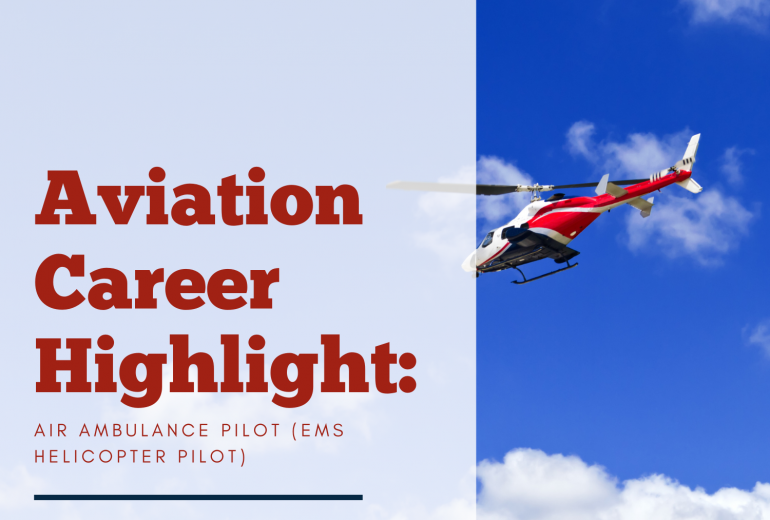When we began our series on aviation careers the goal was to introduce you to the many positions that keep one of the most important means of transportation running 24/7/365. We believe the aviation industry offers an incredible variety of career opportunities that appeal to everyone. Today we’re discussing a career that combines the interests of piloting and medical service.
The air ambulance pilot, commonly known as an EMS helicopter pilot, holds one of the most essential types of pilot roles in the world--they save lives by quickly transporting critical patients by air to the nearest critical care facility. EMS helicopter pilots also often join rescue missions to save patients trapped in remote areas.
What is the Role of an EMS Helicopter Pilot?
The EMS helicopter pilot’s priority is to safely transport critical care patients by helicopter to and from medical facilities or from the scene of an accident to the hospital. The pilot’s job is to operate the aircraft safely while the flight paramedics treat the patient. Medical training is not required for the position.
Typical daily tasks of an EMS Helicopter Pilot include:
-
Completing pre-flight checklists, checking for flight conditions notices, reviewing staff, and inspecting the aircraft before beginning the shift.
-
Preparing the aircraft to quickly respond to calls, launching within five to ten minutes of the call.
-
Operating the helicopter in both good and bad weather conditions and occasionally at night.
-
Balancing the helicopter’s load and operation to accommodate patients and medical staff.
-
Helping medical staff with cleanup and non-essential duties for increased efficiency.
-
Logging flights and preparing the aircraft for the next flight.
How Do I Become an EMS Helicopter Pilot?
Most companies prefer that EMS helicopter pilots have a college degree--an associate’s degree in aviation may be sufficient for some but most prefer a bachelor’s degree or higher. Hinds Community College and Delta State University both offer excellent aviation education programs for aspiring pilots. The aviation technology program opens the door for scholarships to help fund your flight training and pre-qualify you for certain licenses. A degree in physics or mathematics can also meet qualifications.
Before you can become a pilot, the FAA requires you to undergo a physical examination. There are three classes of FAA medical certificates. EMS pilots require a class 2 certificate, which allows them to fly as commercial pilots. Some companies require a class 1 certification.
The next step to becoming an EMS helicopter pilot is to get your flight training. You can do this by joining the military or by attending an FAA-approved flight training program. Flight school will include ground school training in a classroom environment and flight education with an instructor to learn basic maneuvers and how to operate the helicopter. The FAA requires 40 hours of flight experience, although it can take up to 60 to 80 hours to perform all the required maneuvers and processes. Next, you take your FAA exam, and once you pass it, you’ll need to obtain your instrument certification. This certification allows you to operate a helicopter with navigation instruments.
Once you’ve reached these steps, it’s time to earn your commercial helicopter pilot’s license. To do this you’ll need to pass the knowledge exam 24 months before you take the practical exam. You’ll also need to take additional ground school training and in-flight instruction and 150 hours of flight experience. Finally, you’ll take and pass the oral and practical exams and start logging more flight hours to make your resume stand out among the rest.
The path to becoming an EMS helicopter pilot is not easy but it’s one of the most rewarding careers in the aviation industry. If you have a heart for the medical industry and a passion for flying, please consider this essential career.


